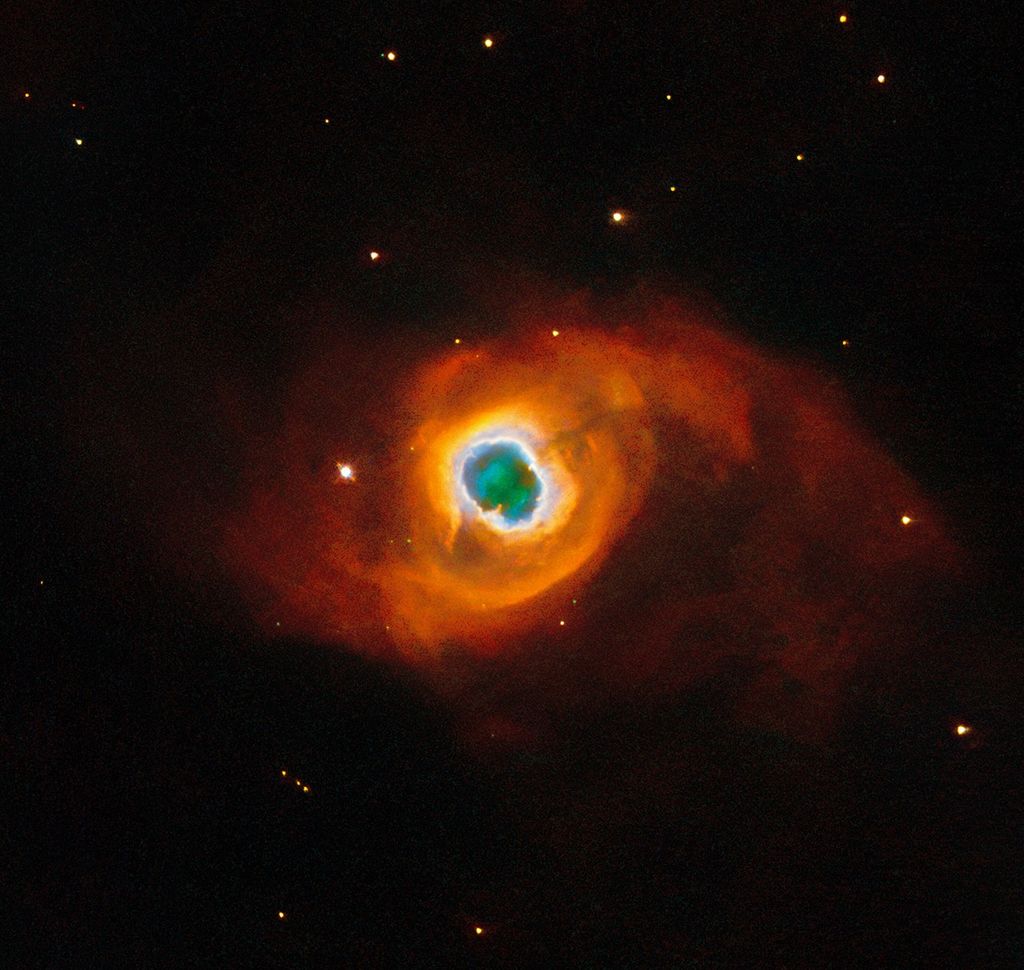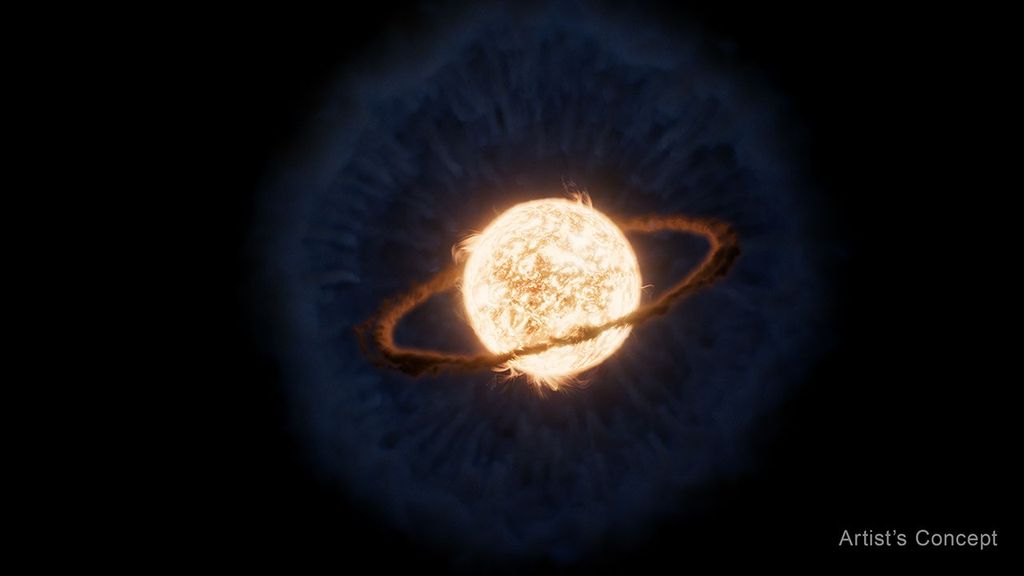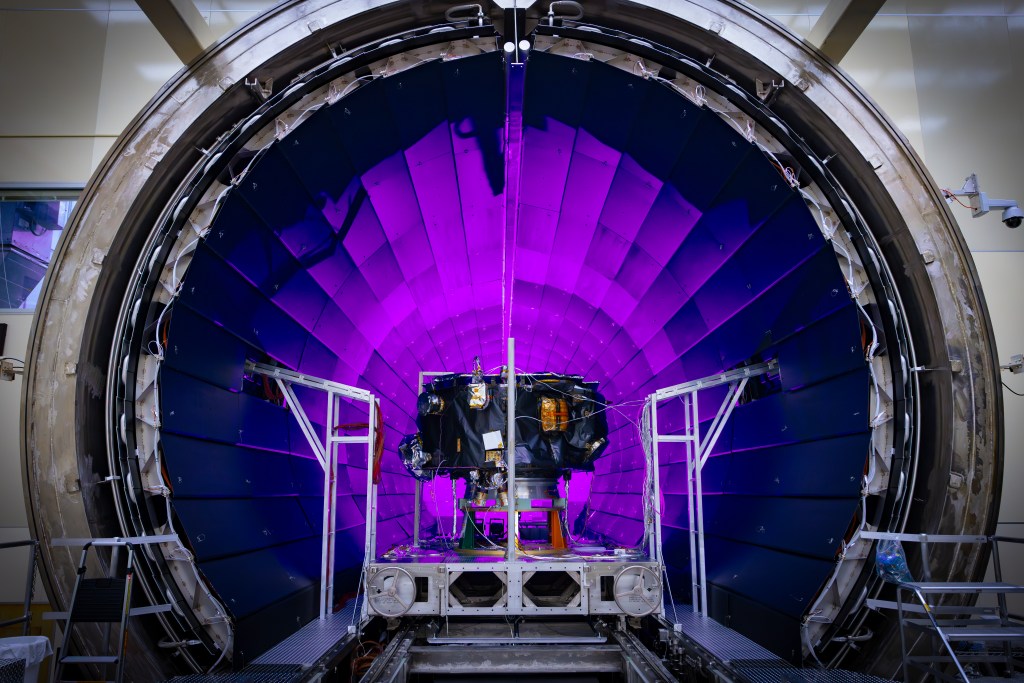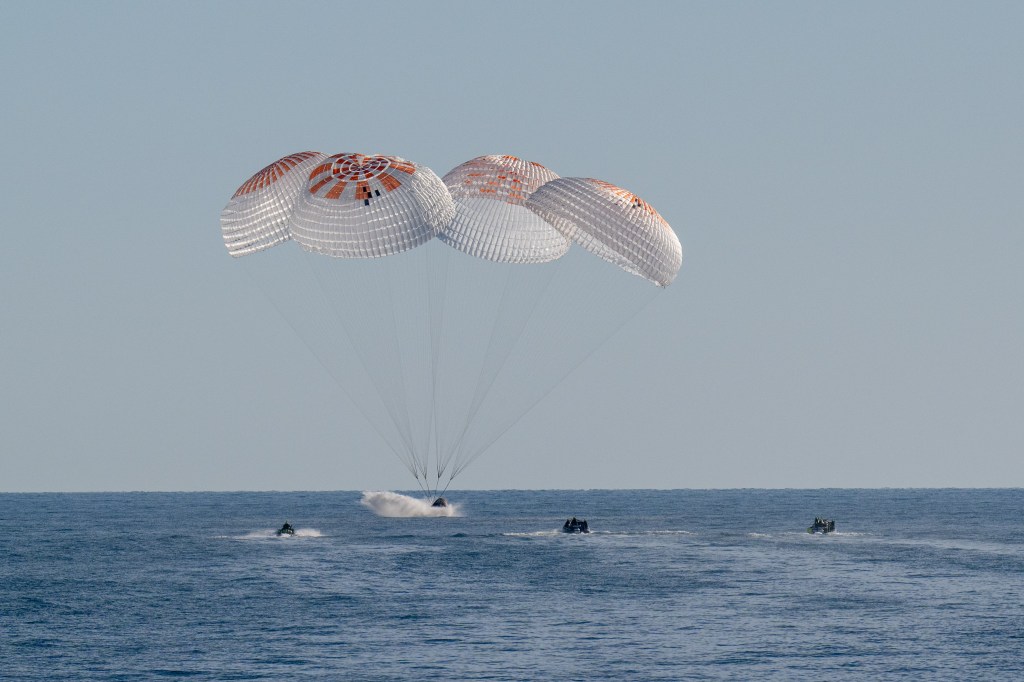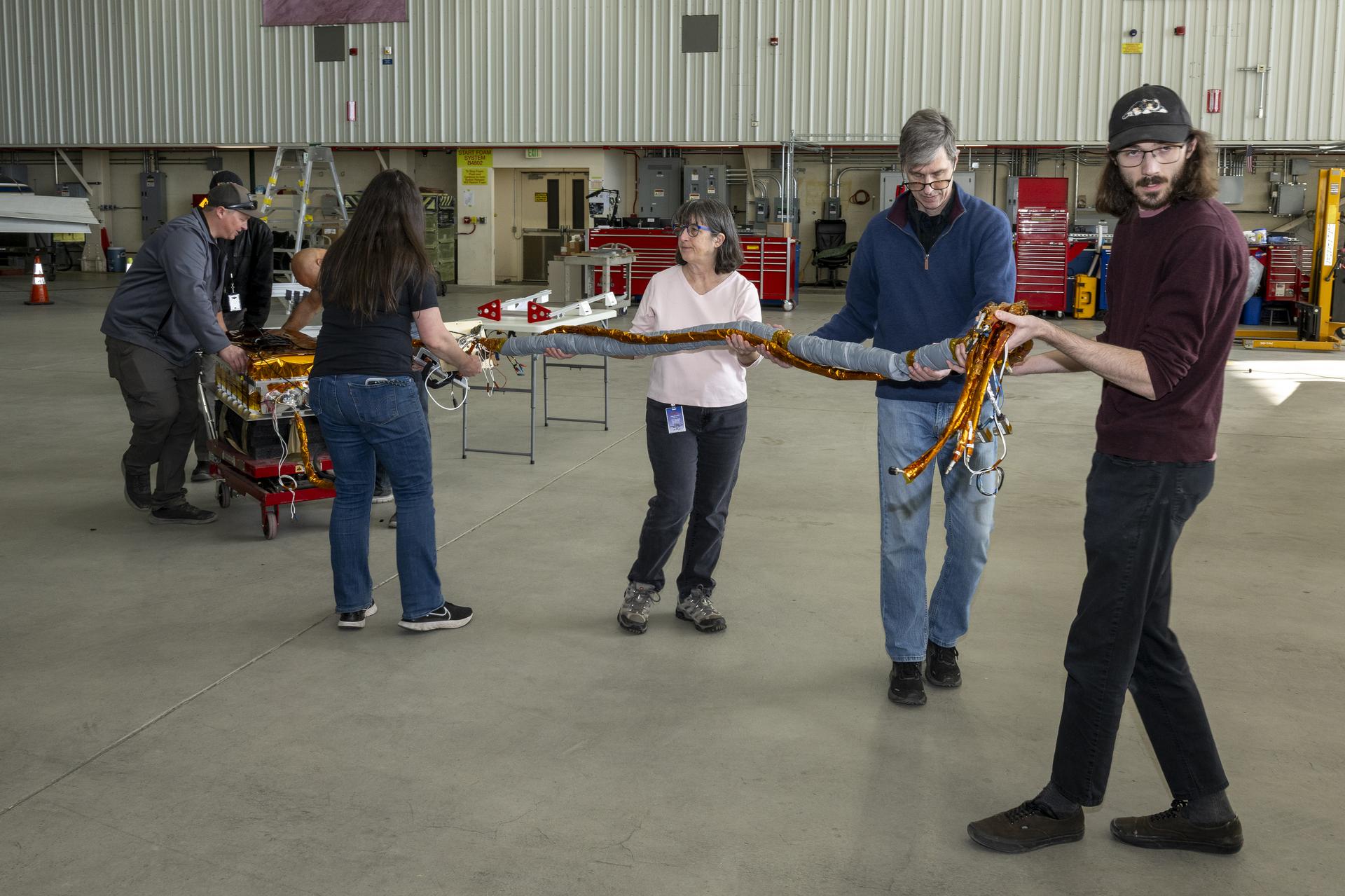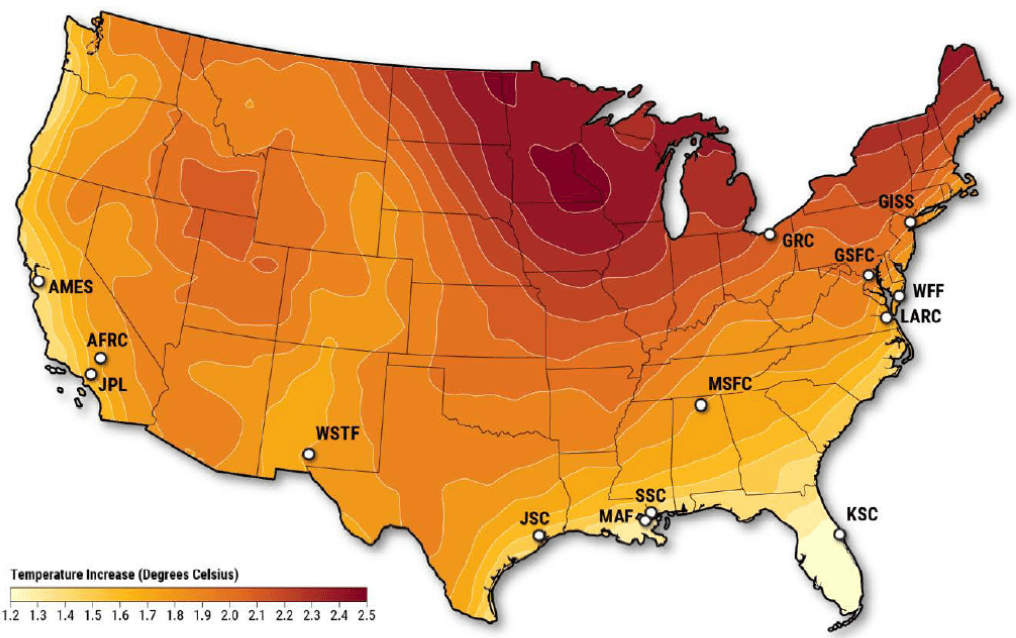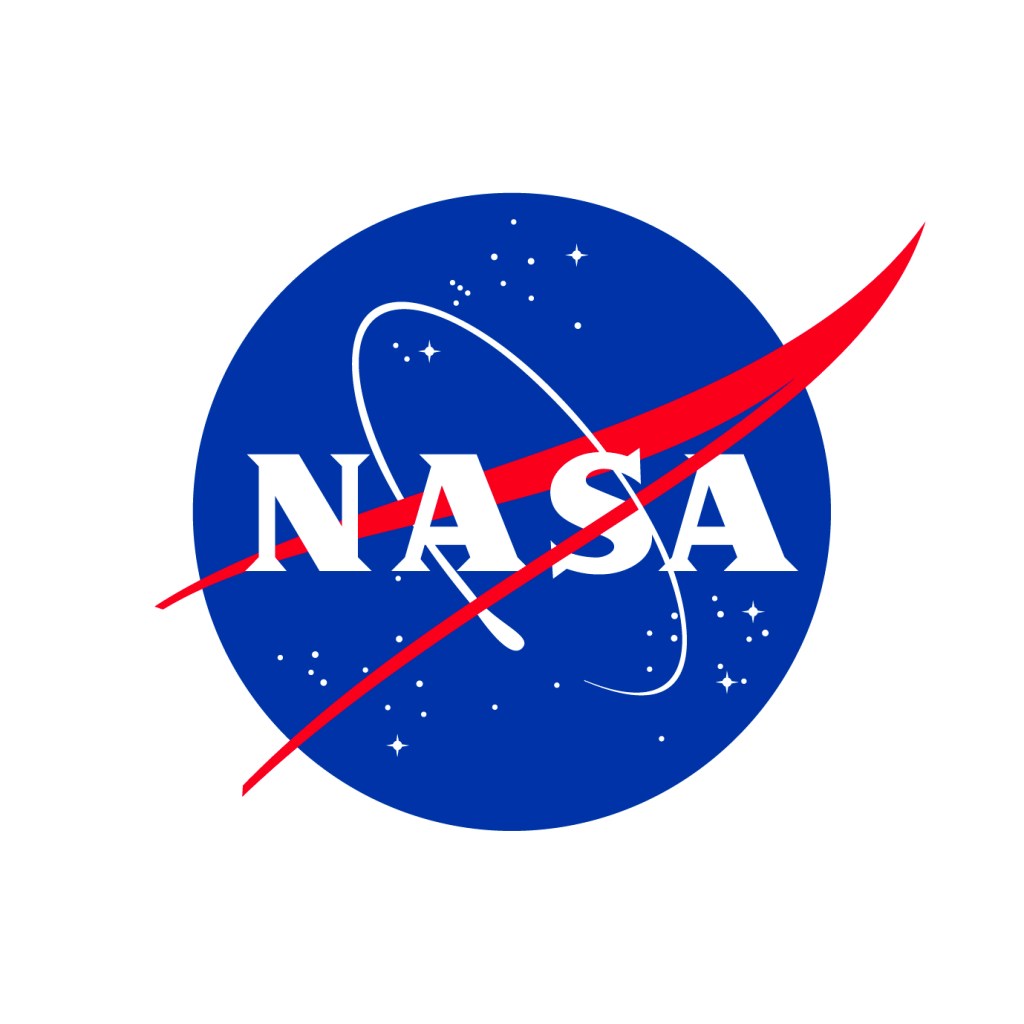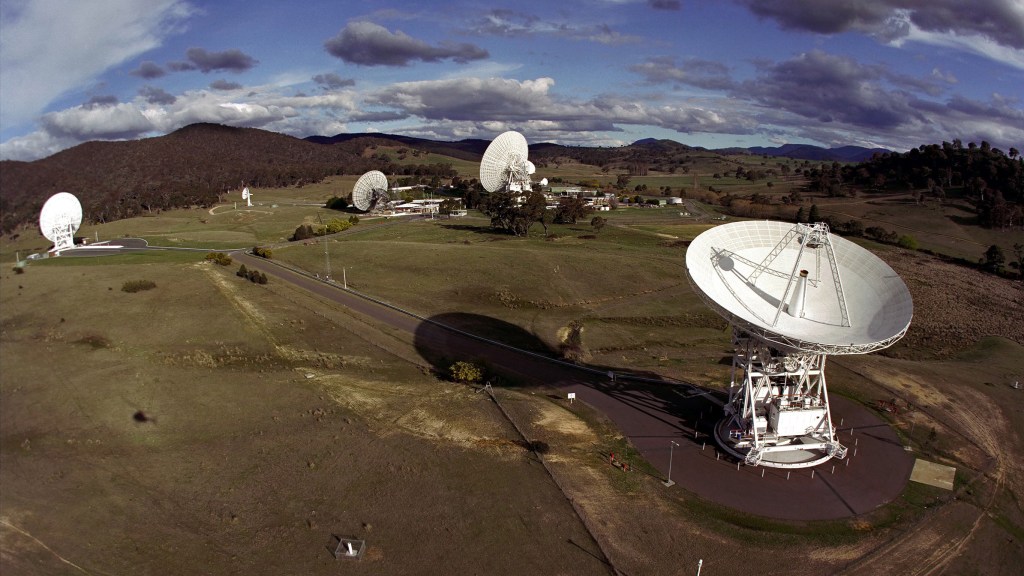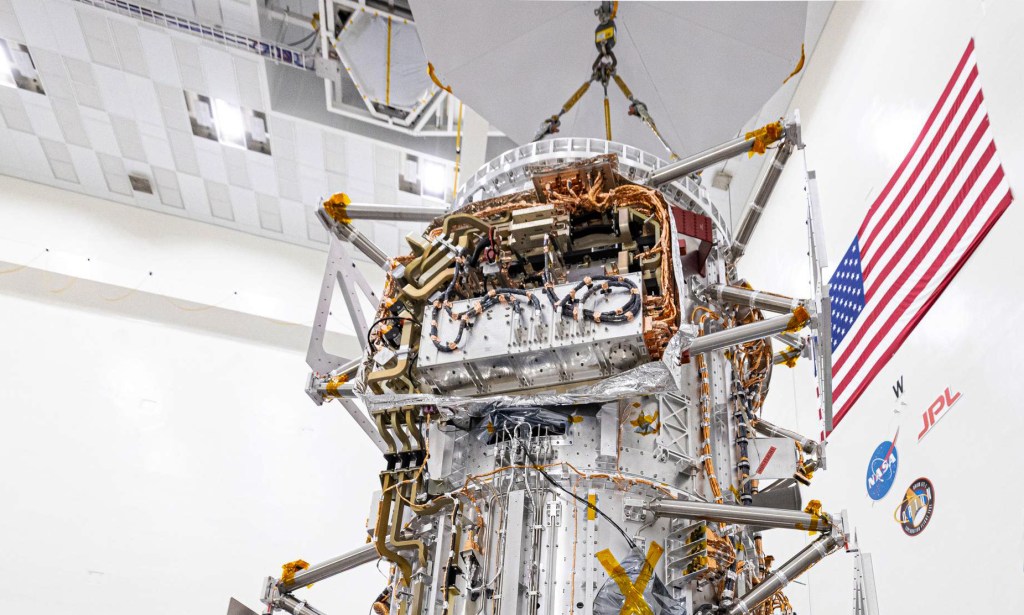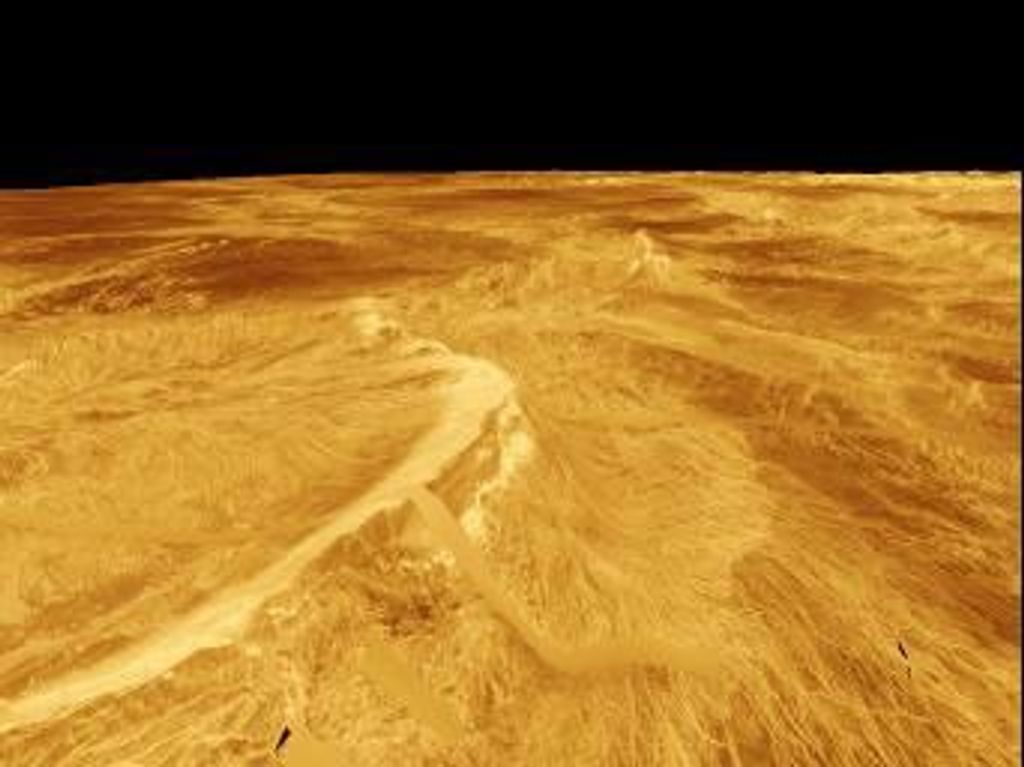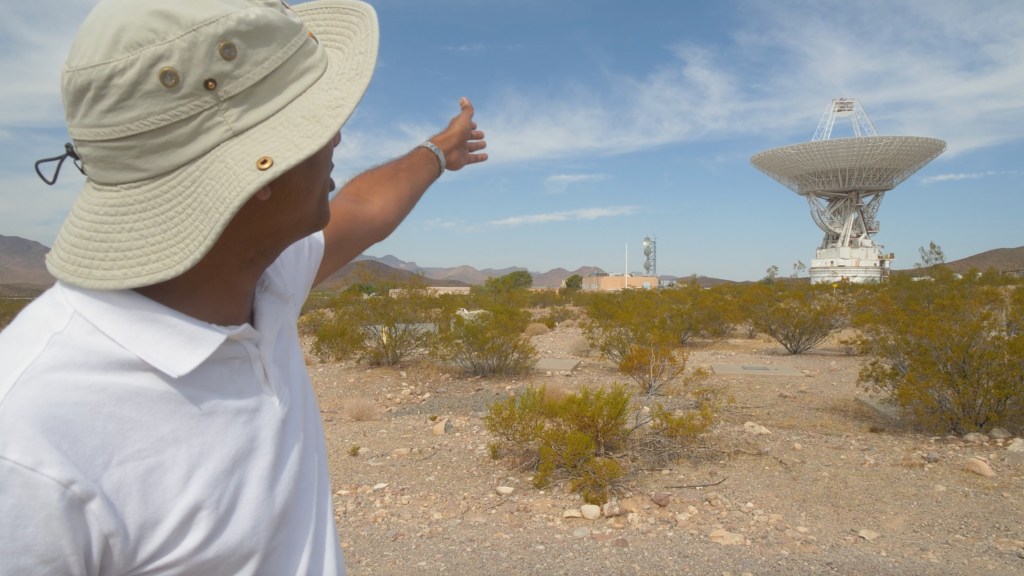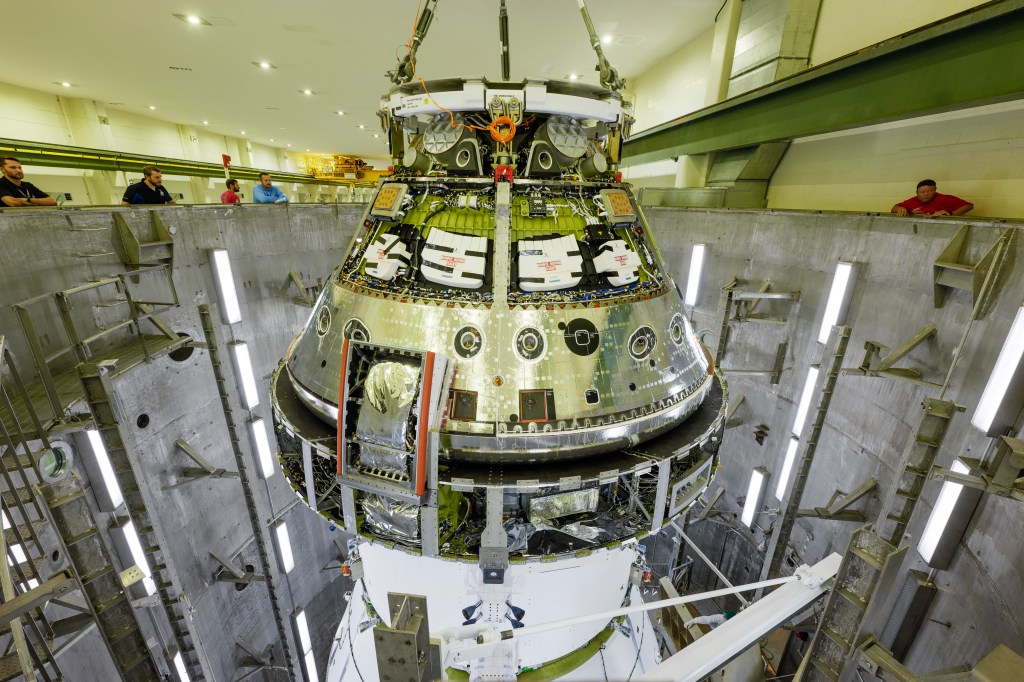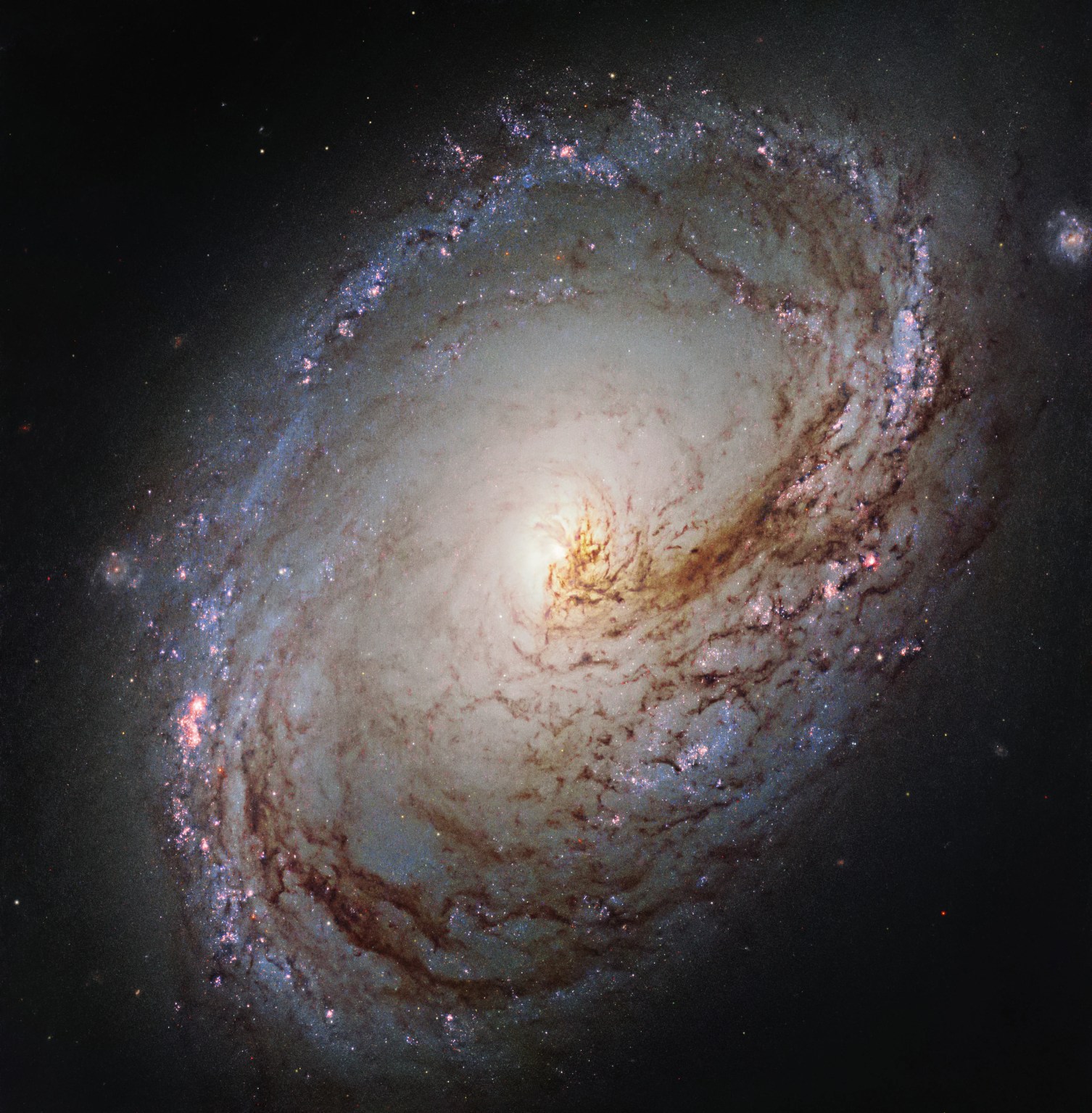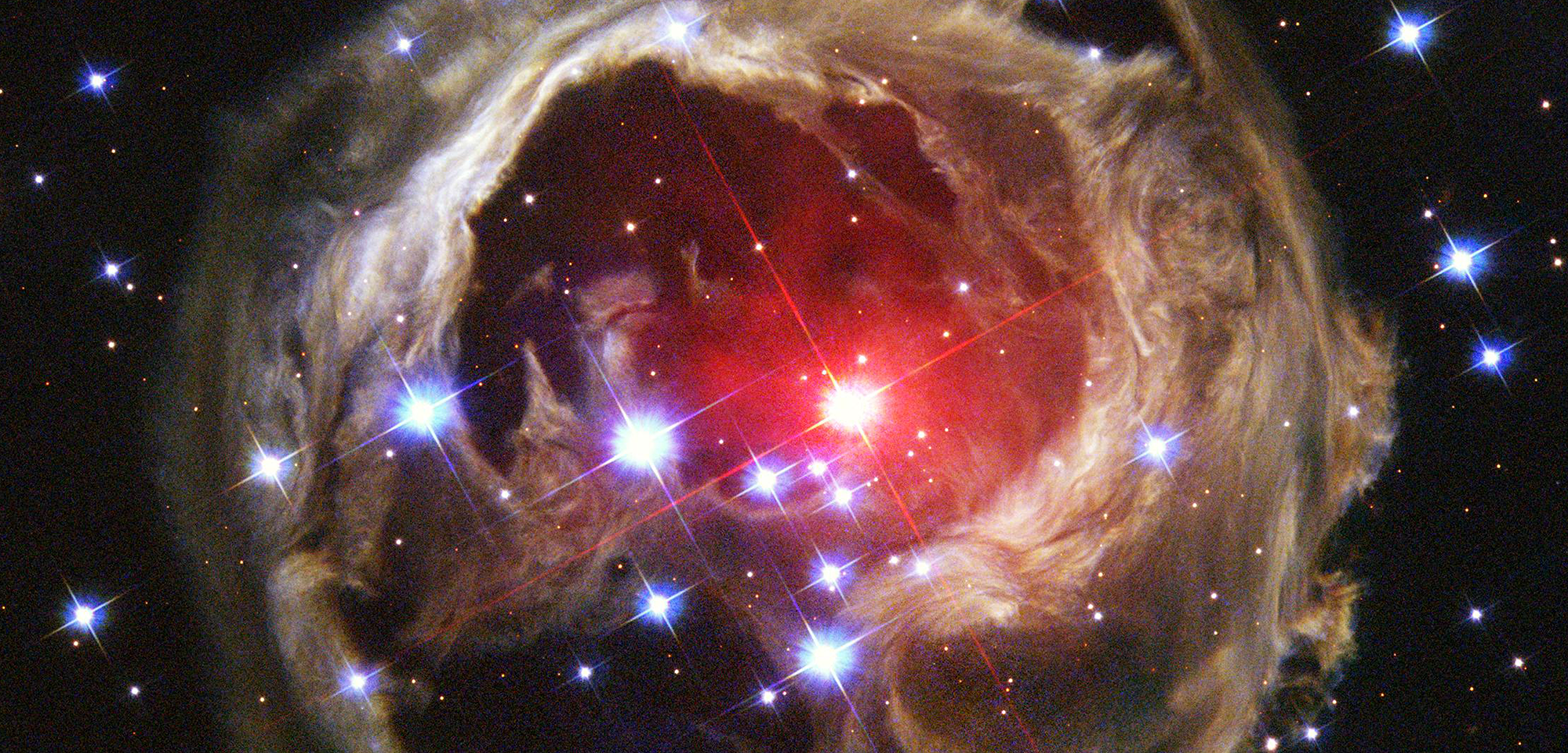1 min read
Uranus (Nov. 2014 and Nov. 2022)

Planetary oddball Uranus rolls on its side around the Sun as it follows an 84-year orbit, rather than spinning in a more-vertical position as Earth does. Uranus has a weirdly tipped "horizontal" rotation axis angled just eight degrees off the plane of the planet's orbit. One recent theory proposes that Uranus once had a massive moon that gravitationally destabilized it and then crashed into it. Other possibilities include giant impacts during planetary formation, or even giant planets exerting resonant torques on each other over time. The consequences of the planet's tilt are that for stretches of time lasting up to 42 years, parts of one hemisphere are completely without sunlight. When the Voyager 2 spacecraft visited during the 1980s, the planet's south pole was pointed almost directly at the Sun. Hubble's latest view shows the northern pole now tipping toward the Sun.
[left]—This is a Hubble view of Uranus taken in 2014, seven years after northern spring equinox when the Sun was shining directly over the planet's equator, and shows one of the first images from the OPAL program. Multiple storms with methane ice-crystal clouds appear at mid-northern latitudes above the planet's cyan-tinted lower atmosphere. Hubble photographed the ring system edge-on in 2007, but the rings are seen starting to open up seven years later in this view. At this time, the planet had multiple small storms and even some faint cloud bands.
[right]—As seen in 2022, Uranus' north pole shows a thickened photochemical haze that looks similar to the smog over cities. Several little storms can be seen near the edge of the polar haze boundary. Hubble has been tracking the size and brightness of the north polar cap and it continues to get brighter year after year. Astronomers are disentangling multiple effects—from atmospheric circulation, particle properties, and chemical processes—that control how the atmospheric polar cap changes with the seasons. At the Uranian equinox in 2007, neither pole was particularly bright. As northern summer solstice approaches in 2028 the cap may grow brighter still, and will be aimed directly toward Earth, allowing good views of the rings and north pole; the ring system will then appear face-on. This image was taken on November 10, 2022.
About the Object
- DistanceDistanceThe physical distance from Earth to the astronomical object. Distances within our solar system are usually measured in Astronomical Units (AU). Distances between stars are usually measured in light-years. Interstellar distances can also be measured in parsecs.On Nov. 09, 2014 Uranus was 19.18 AU (1.78 billion miles). On Nov. 14, 2022 Uranus was 18.68 AU (1.74 billion miles).
About the Data
- Data DescriptionData DescriptionProposal: A description of the observations, their scientific justification, and the links to the data available in the science archive.
Science Team: The astronomers who planned the observations and analyzed the data. "PI" refers to the Principal Investigator. - InstrumentInstrumentThe science instrument used to produce the data.WFC3/UVIS
- Exposure DatesExposure DatesThe date(s) that the telescope made its observations and the total exposure time.09 Nov. 2014, and 09 Nov. 2022
- FiltersFiltersThe camera filters that were used in the science observations.F467M, F547M, and F845M
- Object NameObject NameA name or catalog number that astronomers use to identify an astronomical object.Uranus
- Object DescriptionObject DescriptionThe type of astronomical object.Planet
- Release DateMarch 23, 2023
- Science ReleaseHubble Monitors Changing Weather and Seasons at Jupiter and Uranus
- CreditNASA, ESA, STScI, Amy Simon (NASA-GSFC), Michael Wong (UC Berkeley); Image Processing: Joseph DePasquale (STScI)
Downloads

These images are a composite of separate exposures acquired by the WFC3 instrument on the Hubble Space Telescope. Several filters were used to sample medium wavelength ranges. The color results from assigning different hues (colors) to each monochromatic (grayscale) image associated with an individual filter. In this case, the assigned colors are: Blue: F467M, Green: F547M, Red: F845M
Related Images & Videos

Jupiter (Nov. 2022 and Jan. 2023)
[left] —The forecast for Jupiter is stormy weather at low northern latitudes. A prominent string of alternating storms is visible, forming a "vortex street" as some planetary astronomers call it. This is a wave pattern of nested anticyclones and cyclones, locked together like in...

Jupiter Compass Image
Two views of the giant gas planet Jupiter appear side-by-side for comparison. At the top, left corner of the left image is the label Jupiter, November 12, 2022, HST WFC3/UVIS. At the left, bottom corner of the left image is a small, horizontal, white line. Over this line is the...

Uranus Compass Image
Two views of the planet Uranus appear side-by-side for comparison. At the top, left corner of the left image is a two-line label. The top line reads Uranus November 9, 2014. The bottoms line reads HST WFC3/UVIS. At the top, left corner of the right image is the label November...
Share
Details
Claire Andreoli
NASA’s Goddard Space Flight Center
Greenbelt, Maryland
claire.andreoli@nasa.gov

